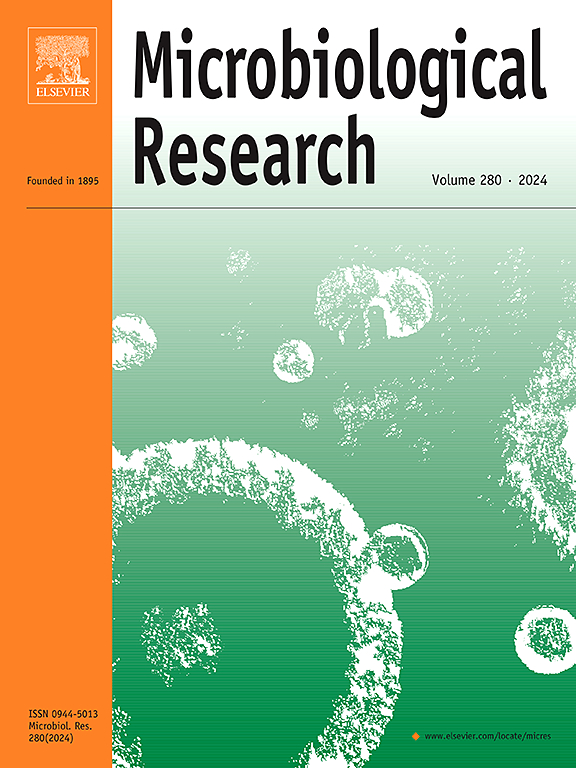The global transcription factor Clp exerts positive regulatory effects in the walnut bacterial black spot pathogen, Xanthomonas arboricola pv. juglandis
IF 6.1
1区 生物学
Q1 MICROBIOLOGY
引用次数: 0
Abstract
Walnut blight caused by the bacterium Xanthomonas arboricola pv. juglandis (Xaj) is one of the most common diseases of walnut (Juglans spp.), resulting in serious yield decline and significant economic losses. Crp-like protein (Clp) is an important global regulatory transcription factor in bacteria. In this study, we sought to elucidate the role of Clp in the pathogenicity of Xaj strain DW3F3 and the associated regulatory mechanism. The results indicated that clp gene deficiency significantly reduced the pathogenicity of Xaj DW3F3 in walnut without affecting the growth of the bacterium. We found that Clp positively regulates biofilm formation, extracellular polysaccharide production, exoenzyme secretion, and motility of Xaj, which was consistent with the transcript levels of virulence factor-encoding genes. However, overexpression of clp does not enhance the expression of all virulence genes, it may inhibit the expression of a part of virulence factor-related genes. EMSA assay further showed that Clp specifically binds to the promoters of these genes and regulates their expression, and CD spectra test certified that the ligand of Clp was c-di-GMP. Our findings contribute to the in-depth understanding of the pathogenic mechanism of Xaj and highlight the potential of Clp as a drug target for the development of agents to prevent and control walnut diseases.
全局转录因子 Clp 在核桃细菌性黑斑病病原体 Xanthomonas arboricola pv. juglandis 中发挥积极的调控作用。
由核桃黄单胞菌(Xanthomonas arboricola pv. juglandis,Xaj)引起的核桃枯萎病是核桃(Juglans spp.)最常见的病害之一,会导致严重减产和重大经济损失。Crp 样蛋白(Clp)是细菌中一种重要的全球调控转录因子。本研究试图阐明 Clp 在 Xaj 菌株 DW3F3 致病性中的作用及相关调控机制。结果表明,Clp 基因缺失会显著降低 Xaj DW3F3 在核桃中的致病性,而不会影响细菌的生长。我们发现 Clp 对 Xaj 的生物膜形成、胞外多糖产生、外酵素分泌和运动有正向调控作用,这与毒力因子编码基因的转录水平一致。然而,过表达 clp 并不会增强所有毒力基因的表达,它可能会抑制部分毒力因子相关基因的表达。EMSA测定进一步表明,Clp能特异性地与这些基因的启动子结合并调控它们的表达,CD光谱检测证明Clp的配体是c-di-GMP。我们的研究结果有助于深入了解 Xaj 的致病机理,并凸显了 Clp 作为药物靶点开发预防和控制核桃疾病的潜力。
本文章由计算机程序翻译,如有差异,请以英文原文为准。
求助全文
约1分钟内获得全文
求助全文
来源期刊

Microbiological research
生物-微生物学
CiteScore
10.90
自引率
6.00%
发文量
249
审稿时长
29 days
期刊介绍:
Microbiological Research is devoted to publishing reports on prokaryotic and eukaryotic microorganisms such as yeasts, fungi, bacteria, archaea, and protozoa. Research on interactions between pathogenic microorganisms and their environment or hosts are also covered.
 求助内容:
求助内容: 应助结果提醒方式:
应助结果提醒方式:


